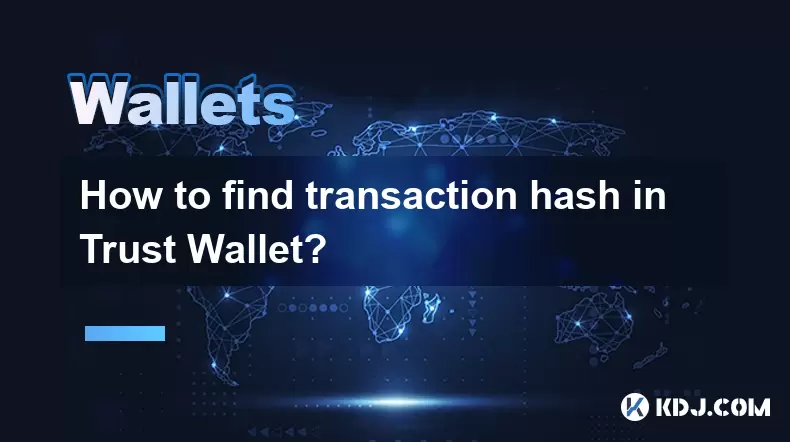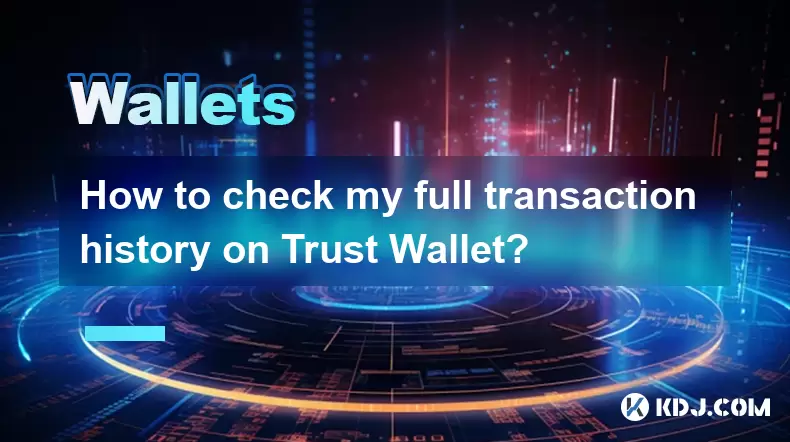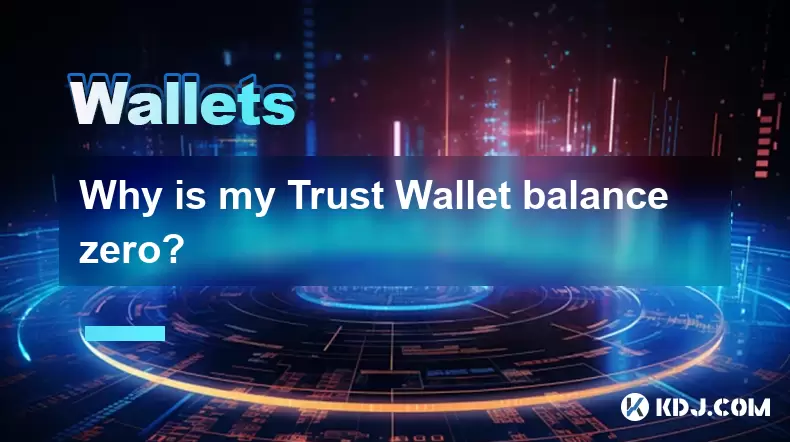-
 Bitcoin
Bitcoin $114000
0.38% -
 Ethereum
Ethereum $3494
-0.29% -
 XRP
XRP $2.876
-1.80% -
 Tether USDt
Tether USDt $0.9999
0.02% -
 BNB
BNB $749.1
-0.45% -
 Solana
Solana $161.8
-1.23% -
 USDC
USDC $0.9998
0.00% -
 TRON
TRON $0.3249
-0.42% -
 Dogecoin
Dogecoin $0.1987
-0.05% -
 Cardano
Cardano $0.7247
1.90% -
 Hyperliquid
Hyperliquid $38.39
0.52% -
 Stellar
Stellar $0.3889
2.87% -
 Sui
Sui $3.459
1.66% -
 Chainlink
Chainlink $16.18
1.43% -
 Bitcoin Cash
Bitcoin Cash $540.8
1.19% -
 Hedera
Hedera $0.2449
3.79% -
 Ethena USDe
Ethena USDe $1.001
0.03% -
 Avalanche
Avalanche $21.41
-0.12% -
 Toncoin
Toncoin $3.699
4.73% -
 Litecoin
Litecoin $110.0
3.08% -
 UNUS SED LEO
UNUS SED LEO $8.964
0.05% -
 Shiba Inu
Shiba Inu $0.00001221
1.28% -
 Polkadot
Polkadot $3.608
1.91% -
 Uniswap
Uniswap $9.150
1.59% -
 Monero
Monero $297.7
0.78% -
 Dai
Dai $1.000
0.02% -
 Bitget Token
Bitget Token $4.319
0.78% -
 Pepe
Pepe $0.00001051
1.89% -
 Cronos
Cronos $0.1323
0.20% -
 Aave
Aave $257.8
1.36%
How to find transaction hash in Trust Wallet?
A transaction hash (TXID) is a unique identifier for crypto transactions, used to verify and track them on the blockchain via explorers like Etherscan or BscScan.
Aug 03, 2025 at 05:15 pm

Understanding the Transaction Hash in Cryptocurrency Transactions
A transaction hash, also known as a TXID (Transaction ID), is a unique alphanumeric string that identifies a specific transaction on a blockchain. Every time you send or receive cryptocurrency through Trust Wallet, the network generates this hash to confirm the transaction’s existence and validity. The transaction hash serves as proof that the transaction occurred and can be used to track its status on the blockchain. Without this identifier, verifying the success or failure of a transfer becomes nearly impossible. It is crucial for troubleshooting, confirming receipt, and providing evidence in disputes.
Accessing Your Wallet History in Trust Wallet
To locate your transaction hash, you must first open the Trust Wallet application on your mobile device. Once launched, navigate to the wallet tab where all your supported cryptocurrencies are listed. Select the specific cryptocurrency involved in the transaction—for example, BTC, ETH, or BSC (Binance Smart Chain). After tapping on the asset, you will be directed to its dedicated wallet page. Here, you’ll see a list of all transactions associated with that particular wallet. These include both incoming and outgoing transactions. Each entry displays basic details such as the amount, date, and status (confirmed or pending).
Locating the Transaction Hash in Individual Transaction Details
Tap on the specific transaction for which you need the transaction hash. This action opens a detailed view of the transaction. Within this screen, you will find several key pieces of information: the from address, to address, amount, network fee, timestamp, and most importantly, the transaction hash. This hash is usually displayed as a long string of letters and numbers. It may be labeled as “Transaction ID” or “TXID” depending on the version of Trust Wallet you are using. The transaction hash is often shown in a scrollable field, and you can tap and hold it to copy the entire string to your clipboard. This copied hash can then be used for verification on blockchain explorers.
Using Blockchain Explorers to Verify the Transaction Hash
After copying the transaction hash, you can verify its details using a blockchain explorer. The correct explorer depends on the network used. For Bitcoin (BTC) transactions, use blockchain.com or blockstream.info. For Ethereum (ETH) and BEP-20 tokens, use Etherscan. For Binance Smart Chain (BSC) assets, use BscScan. Open a web browser and navigate to the appropriate explorer. Paste the transaction hash into the search bar at the top of the page and press enter. The explorer will display full details of the transaction, including confirmation status, block number, gas fees, and timestamps. This process confirms that the transaction was successfully recorded on the blockchain.
Copying and Sharing the Transaction Hash Safely
When sharing your transaction hash, it is safe to do so because it does not expose private keys or sensitive account information. However, always ensure you are sending it to trusted parties. To copy the hash in Trust Wallet:
- Open the transaction details
- Locate the transaction hash field
- Tap and hold the hash string
- Select “Copy” from the context menu
Once copied, you can paste it into emails, support tickets, or messaging apps. If you are providing proof of payment to a merchant or exchange, this hash is sufficient. Never share your recovery phrase or private key in place of the transaction hash. The transaction hash is public information, but your wallet credentials are not.
Common Issues When Finding the Transaction Hash
Sometimes, users may not see a transaction in their history. This can happen if the transaction is still pending or was sent to the wrong network. Ensure you are viewing the correct wallet—for example, a USDT transaction on the TRON network will not appear in your Ethereum wallet. If the transaction is pending, it may not yet have a confirmed transaction hash. Wait for network confirmation. If the transaction does not appear after an extended period, verify the receiving address and network with the sender. In rare cases, a failed transaction may still generate a hash, which can be found in the transaction history with a “Failed” label. This hash can still be used for investigation on a blockchain explorer.
Handling Multi-Network Tokens and Their Transaction Hashes
Certain tokens, such as USDT or USDC, exist on multiple blockchains (e.g., Ethereum, TRON, Binance Smart Chain). Each network generates a separate transaction hash for the same token transfer. When checking the hash, you must ensure you are looking at the correct network within Trust Wallet. For instance, if you sent USDT via the TRON network, you must select the TRON (TRX) wallet in Trust Wallet to view the transaction. The transaction hash will only appear under that specific network’s transaction history. Using the wrong network’s explorer (e.g., Etherscan for a TRON transaction) will result in “Transaction not found” errors.
Frequently Asked Questions
Can I find a transaction hash if the transaction is still pending?
Yes, Trust Wallet usually displays a transaction hash even for pending transactions. The hash appears shortly after the transaction is broadcast to the network. You can copy it and track its status on a blockchain explorer. Pending transactions will show as unconfirmed until miners or validators include them in a block.
What should I do if the transaction hash is not showing in Trust Wallet?
First, ensure you are viewing the correct cryptocurrency wallet. Refresh the transaction list by pulling down on the screen. If the transaction still doesn’t appear, the network might be experiencing delays. Check the sender’s wallet or use the recipient address to search on a blockchain explorer directly.
Is the transaction hash the same as the wallet address?
No, the transaction hash is not the same as a wallet address. The wallet address is a public identifier used to receive funds, while the transaction hash is a unique fingerprint of a single transaction. One wallet address can be involved in multiple transactions, each with a different hash.
Can I reverse a transaction using the transaction hash?
No, blockchain transactions are irreversible. The transaction hash only provides tracking and verification capabilities. Once confirmed, a transaction cannot be canceled or reversed, even with the hash. Always double-check recipient addresses and network details before sending funds.
Disclaimer:info@kdj.com
The information provided is not trading advice. kdj.com does not assume any responsibility for any investments made based on the information provided in this article. Cryptocurrencies are highly volatile and it is highly recommended that you invest with caution after thorough research!
If you believe that the content used on this website infringes your copyright, please contact us immediately (info@kdj.com) and we will delete it promptly.
- Altcoins Most Searched: Hedera (HBAR) and the ETF Hype
- 2025-08-03 20:50:16
- Arbitrage Adventures: Creditcoin, Kaspa, and Chasing Crypto Profits
- 2025-08-03 20:30:16
- Claude HIVE & Code Agents: Faster Coding Revolution?
- 2025-08-03 20:50:16
- Trump Media, Bitcoin, and Crypto: A Surprising Alliance in the Making?
- 2025-08-03 21:30:16
- Shiba Inu's Bullish Reversal Hopes Amid Market Uncertainty: A Deep Dive
- 2025-08-03 21:30:16
- Shiba Inu's Struggle, Mutuum Finance's Rise, and Key Support Levels: A Crypto Deep Dive
- 2025-08-03 20:55:16
Related knowledge

What is a watch-only wallet in Trust Wallet?
Aug 02,2025 at 03:36am
Understanding the Concept of a Watch-Only WalletA watch-only wallet in Trust Wallet allows users to monitor a cryptocurrency address without having ac...

How to fix a stuck pending transaction in Trust Wallet?
Aug 03,2025 at 06:14am
Understanding Why Transactions Get Stuck in Trust WalletWhen using Trust Wallet, users may occasionally encounter a pending transaction that appears t...

What is a multi-coin wallet in Trust Wallet?
Aug 03,2025 at 04:43am
Understanding Multi-Coin Wallets in Trust WalletA multi-coin wallet in Trust Wallet refers to a digital wallet that supports multiple cryptocurrencies...

How to switch between networks in Trust Wallet?
Aug 02,2025 at 12:36pm
Understanding Network Switching in Trust WalletSwitching between networks in Trust Wallet allows users to manage assets across different blockchains s...

How to check my full transaction history on Trust Wallet?
Aug 02,2025 at 09:24am
Understanding Transaction History in Trust WalletTrust Wallet is a widely used non-custodial cryptocurrency wallet that supports a broad range of bloc...

Why is my Trust Wallet balance zero?
Aug 02,2025 at 03:49am
Understanding Trust Wallet Balance Display IssuesIf you're seeing a zero balance in your Trust Wallet despite knowing you've previously received or se...

What is a watch-only wallet in Trust Wallet?
Aug 02,2025 at 03:36am
Understanding the Concept of a Watch-Only WalletA watch-only wallet in Trust Wallet allows users to monitor a cryptocurrency address without having ac...

How to fix a stuck pending transaction in Trust Wallet?
Aug 03,2025 at 06:14am
Understanding Why Transactions Get Stuck in Trust WalletWhen using Trust Wallet, users may occasionally encounter a pending transaction that appears t...

What is a multi-coin wallet in Trust Wallet?
Aug 03,2025 at 04:43am
Understanding Multi-Coin Wallets in Trust WalletA multi-coin wallet in Trust Wallet refers to a digital wallet that supports multiple cryptocurrencies...

How to switch between networks in Trust Wallet?
Aug 02,2025 at 12:36pm
Understanding Network Switching in Trust WalletSwitching between networks in Trust Wallet allows users to manage assets across different blockchains s...

How to check my full transaction history on Trust Wallet?
Aug 02,2025 at 09:24am
Understanding Transaction History in Trust WalletTrust Wallet is a widely used non-custodial cryptocurrency wallet that supports a broad range of bloc...

Why is my Trust Wallet balance zero?
Aug 02,2025 at 03:49am
Understanding Trust Wallet Balance Display IssuesIf you're seeing a zero balance in your Trust Wallet despite knowing you've previously received or se...
See all articles

























































































